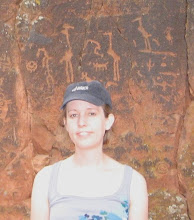Gay marriage is a hot, contentious topic around the country, but Utah has become its own little hotbed of disagreement over this topic. The LDS church and members poured untold time, effort, and money into supporting the passage of California Proposition 8, which outlawed same-sex marriage in California. Passing by a slim margin, the proposition amended the California state constitution to ban gay marriage. But how much did Mormons really contribute to support the passage of Proposition 8? Conflicting accounts have made the truth difficult to tease out.
The Position of the LDS Church on Gay MarriageLike many Christian churches, the Church of Jesus Christ of Latter-day Saints tows a hard line on gay marriage. Marriage is between a man and a woman—period, end of story, line drawn in the sand. Gay marriage is a sin, LDS church leaders say.
This is the rallying position that many Mormons adhered to when they answered the call to duty of LDS church leaders to support California Proposition 8. Prop 8, as it’s nicknamed, overturned the California Supreme Court decision to legalize same-sex marriage early in 2008.
Back Story: LDS Leaders Rally Support for Prop 8Before California voters took to the ballot boxes to cast their votes on Prop 8 in late 2008, LDS church leaders asked the faithful in California and in other states to donate their time and money to spread the message that marriage should only be between a man and woman. LDS leaders outlined a well-organized plan for Mormons to conduct phone and door-to-door campaigns as well as blog, text, and network in other ways to support the passage of Prop 8.
To rally Mormons to the cause, LDS church leaders drafted letters that were read in Mormon congregations and assembled information and produced videos about the church’s stance on same-sex marriage. This information can be found on
LDS.org. The LDS church even set up a website
PreservingMarriage.org, where Mormons could download information about why the position of the LDS church is that traditional marriage is the only divinely sanctioned form of the institution.

Photo Source
Bottom Line: How Much Money Did the LDS Church and Mormons Spend on Prop 8?The LDS church was undoubtedly heavily involved in the campaign to pass Prop 8, but how much did the LDS church itself contribute monetarily to the cause to ban same-sex marriage in California? Initially the church disclosed just over $2,000 of in-kind donations (donations made in goods or services and not in direct financial contributions). However, after pressure from Californians and others prompted an investigation by California’s Fair Political Practices Commission (FPPC) into whether the LDS church had disclosed all of its donations, the church gradually began to divulge more information about its contributions. In the end, the LDS church claimed over $190,000 of in-kind donations, which included nearly $100,000 in church employee staff hours and church building and equipment use.
The LDS church also encouraged Mormons to donate what they could to support the passage of Prop 8, but how much did members actually contribute financially? It is estimated that Mormons donated between $8 and 20 million of the total $40 million, give or take a million or two, to support passage of Prop 8. In any case, Mormons contributed a significant portion of the money that supported the proposition.
In the end, Prop 8 passed by slight margin of 600,000 votes. Fifty-two percent of Californians supported the proposition. Were the efforts of the Mormons and the LDS church, monetary and otherwise, the deciding factor? That is open for speculation. What is clear, however, is that when all contributions made by opponents and proponents of the proposition were tallied, the Prop 8 campaign was the most expensive campaign ever over a social issue.
LDS Church’s Tax-Exempt Status QuestionedSome people have questioned the LDS church’s tax-exempt status after its heavy involvement in the political affairs of California. Some people have even gone so far as to file complaints with the IRS. One Facebook group,
Petition IRS to Revoke Church of Jesus Christ of Latter-Day Saints Tax-Exempt Status, currently has nearly 15,000 members.

Photo Source
The official position of the IRS on the involvement of churches in political affairs is vague and up for interpretation. The IRS regulations state that to retain their tax-exempt status churches “must not provide a substantial benefit to private interests, they must not devote a substantial part of their activities to attempting to influence legislation, they must not participate in, or intervene in, any political campaign on behalf of (or in opposition to) any candidate for public office.”
The official position of the Church of Jesus Christ is that it is a non-political entity. It does not support one political party over another. Nevertheless, the LDS church does periodically weigh in on issues it considers to be morally significant. It has been involved in the fight against the legalization of gay marriage since the early 1990s.

Photo Source
The Gay Marriage Issue Isn’t Going Away The Prop 8 issue may have quieted down a little for now, but this hotly contested issue is a metaphor for the divide that is happening around the country over same-sex marriage. In Utah, this issue has continued to spark disagreements, including a recent one that happened over the summer when a gay couple kissed on a street owned by the LDS Church in downtown Salt Lake City. It seems that the landscape is dry and as tempers flare up, fires are ignited. In the end, all of this contention boils down to two fundamental questions: Should gay marriage be legal, and how much should churches be allowed to participate in the political process?
Photo Source
Photo Source
